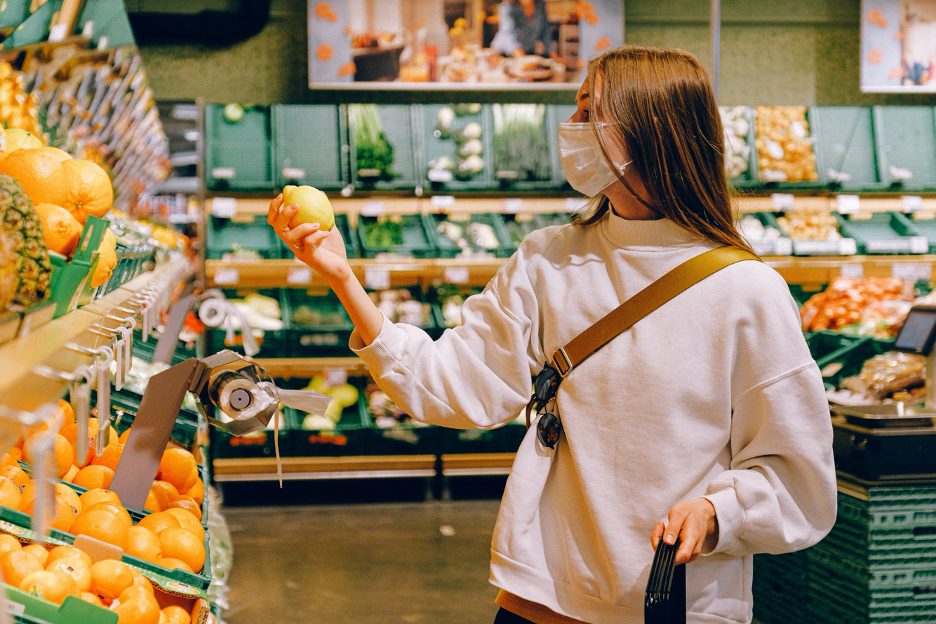The Future of Grocery Retail – A Mixed Mode Experience
Photo by Anna Shvets from Pexels
Ghost Grocery Stores
Last month, DoorDash announced the launch of DashMart, a “virtual” convenience store that sells snacks and groceries. It is fully owned and operated by DoorDash, which is an interesting move by a company that made its name on coordinating the pickup and delivery of restaurant takeout. It’s clear that company sees a big opportunity in the online grocery space and has made several moves to expand into grocery this year. The company started delivering from stores like 7-11, CVS, and Walgreens earlier this year. A number of other grocery stores are already part of the DoorDash Drive program, a white-label last-mile delivery service.
In a similar announcement, Amazon is opening an online-only Whole Foods in Brooklyn. This location is not open to the public and only fulfills online orders. Such a set-up has the potential to make online grocery deliveries faster and more seamless. Without public traffic, Amazon will have accurate stock information and delivery workers won’t have to battle any crowds.
These developments are a well-timed response to changing consumer behavior during the pandemic. As the stay-at-home orders set in during March, 39.5 million consumers (31% of U.S. households) used an online grocery delivery or pick-up service. For reference, this number was just 13% (16.1 million consumers) in August 2019, according to consulting firm Brick Meets Click. The question is – is the online grocery trend here to stay?
The Mixed-Mode Grocery Experience
My prediction is the future of grocery retail will be mixed-modal with many customers choosing to use both online and in-person shopping for different purposes and products.
Even as restrictions begin to lift, consumers are still concerned about exposure to public settings. People generally want to limit the number of trips they make to the grocery store. There’s also the convenience factor—customers who wouldn’t have otherwise adopted online grocery platforms are becoming familiar and accustomed to the experience, finding it useful for certain types of items.
People may choose to go in-person so they can physically assess items that tend to vary more like produce and other fresh grocery items. But they may favor online delivery for all other household staples that tend to be more consistent. People don’t necessarily need to touch and compare a box of crackers or a pack of toilet paper, so it’s convenient for couriers to pick and deliver them. To remain competitive, grocery retailers need a seamless mixed mode experience, so that both their in-person and online shopping experiences meet the customers’ new expectations.
In-store expectations
During pandemic, traffic signs and placement of product have been optimized to allow for social distancing. Moving forward, customers will continue to have high expectations for personal space and optimal navigation throughout the store. Retailers may pay more attention to layout and traffic patterns so that customers feel comfortable shopping.
Online expectations
Flexibility and adaptability are crucial when it comes to online grocery experiences. Retailers need extremely responsive systems to accurately track in-stock status of items, as well as a good substitution system when items go out of stock. Instacart includes a feature that allows users to select several back-up items in case the item you chose is out of stock by the time your shopper gets to the store. As mentioned before, online-only stores like Amazon’s new virtual Whole Foods avoid this issue.
Additionally, customers have come to expect optionality of getting items delivered or picking it up curbside. Target has done an excellent job in addressing this desire for curbside pickup. Target had already offered grocery delivery through Shipt and both online Order Pickup and a same-day curbside service called Drive Up. But it hadn’t yet offered the ability to pick up groceries due to issues with storing cold foods. Store remodels and expansions to the pickup area inside some Target stores addressed the problem.
Of course, the key here will be to design these two modes as one seamless brand experience. As I mentioned in my previous post, a brand is its customer experience. The grocery retailers that can provide high-quality customer interactions, both online and in-store, will have a sustained competitive advantage long after the pandemic.
The views in this article are purely my own. In no way is this article related to, informed by or endorsed by my employer.



